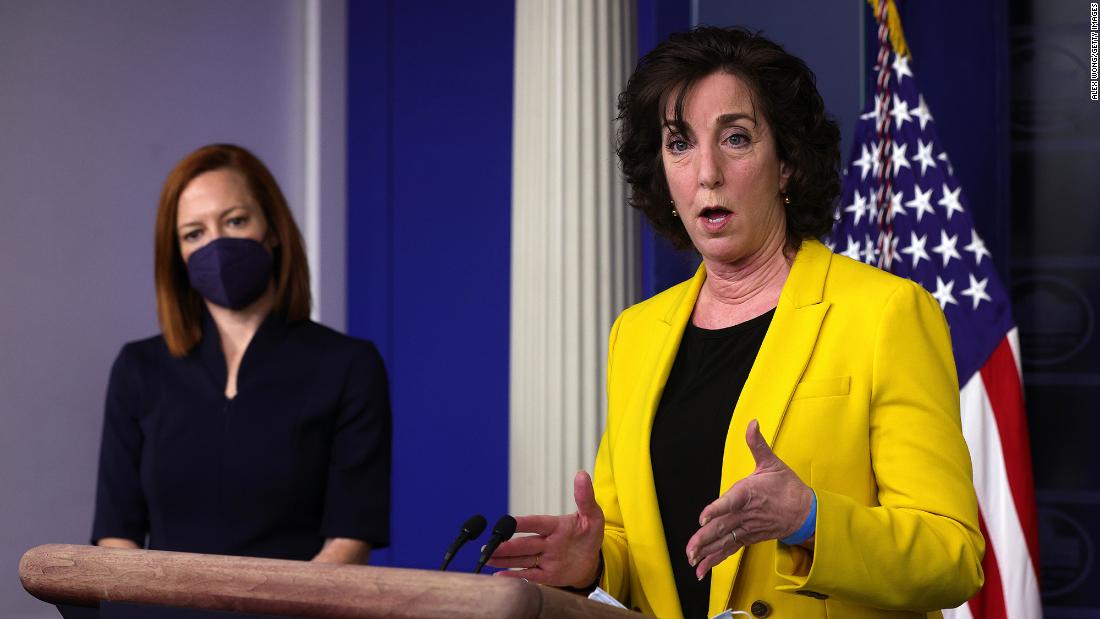There’s a surge of kids at the border, but the Biden admin won’t call it a crisis
The issue of how to handle children, part of a huge wave of undocumented migrants and asylum seekers from Central America, stretches back to the Obama administration, and it is now clear that the change from former President Donald Trump to Biden may have actually temporarily exacerbated the problem in the short term.
How many children are coming across the US-Mexico border each day? On average, over the last 21 days, Customs and Border Protection encountered 435 unaccompanied children daily, up from a previous average of around 340 children.
More than 3,400 unaccompanied migrant children were in Customs and Border Protection custody, according to the data dated Tuesday.
How does this compare to previous surges of unaccompanied minors? To compare, at the peak of the 2019 border crisis — when there were overcrowded facilities and children sleeping on the ground — there were around 2,600 unaccompanied children in Border Patrol custody, a former CBP official told CNN.
Does everyone agree this is a crisis? No, the Biden administration does not. White House press secretary Jen Psaki declined to confirm Tuesday’s numbers or characterize this as a “crisis.”
Psaki and Roberta Jacobson, the Biden administration’s coordinator for the southern border, briefed reporters from the White House on Wednesday. They said Biden’s administration would focus on improving situations in Central American countries so that the trip to the US-Mexico border would be unnecessary in the future.
He’s asking Congress for $4 billion to help in that effort, re-starting a program to place unaccompanied minors with relatives legally present in the US, and she noted the Biden administration has already changed policy to let asylum seekers apprehended at the border make their case from the US, not Mexico.
“Only by addressing those root causes can we break the cycle of desperation and provide hope for families who clearly would prefer to stay in their countries and provide a better future for their children,” Jacobson said.
Why not just call it a crisis? “I’m not trying to be cute here, but I think the fact of the matter is we have to do what we do regardless of what anybody calls the situation,” Jacobson said Wednesday. “And the fact is, we are all focused on improving the situation, on changing to a more humane and efficient system, and — and whatever you call it wouldn’t change what we’re doing because we have urgency from the president on down to fix our system and make sure that we are better at dealing with the hopes and the dreams of these migrants in their home country.”
Where will the children be sent? It’s not entirely clear. Around 2,800 were awaiting placement in shelters suitable for minors, but there were just under 500 beds available to accommodate them.
How is the system supposed to work? Typically, after being taken into Border Patrol custody, unaccompanied children have to be turned over within 72 hours to the Department of Health and Human Services, which is tasked with the care of migrant children, barring exceptional circumstances.
Once in care, case managers will work to place children with a sponsor, like a parent or relative, in the US.
How is the pandemic affecting this situation? Some locations are keeping some beds unoccupied to comply with health guidelines — but as a result of the coronavirus pandemic, and precautions to avoid spread of Covid-19, the department has until recently only been able to use a little more than half of the beds it has for children.
What is the Biden administration saying? Don’t come to the US right now. Jacobson emphasized at the White House press briefing Wednesday the administration’s message that now is not the time to come to the US.
“It’s really important that people not make the dangerous journey in the first place, that we provide them with alternatives to making that journey, because it’s not safe en route,” she said. “And so, you know, if I could just emphasize that, that it’s really important that that message get out, because the perception is not the same as the reality in terms of the border not being open.”
How is the change in administration affecting the situation? This week’s data reveals the continued bottleneck in the system, with more children coming into custody than the US government is prepared to care for. It also emphasizes the hurdles facing the Biden administration as it tries to strike a more humanitarian approach on immigration while juggling the realities on the border.
Why is this happening now? Myriad reasons can account for the sudden rise in children at the US-Mexico border, including the pandemic’s dramatic toll on Latin America, where economies once projected to grow have been decimated, the results of two devastating hurricanes that hit the region, and a perception of relaxed enforcement by the Biden administration.
“We’ve seen surges before. Surges tend to respond to hope, and there was a significant hope for a more humane policy after four years of, you know, pent up demand,” Jacobson said Wednesday.
The new filing is the latest example of the Biden administration switching positions from the Trump era. Under former President Donald Trump, immigration enforcement was a cornerstone of his agenda.
Last month, the justices agreed to take up a challenge to the so called “public charge” rule brought by The Legal Aid Society, various groups and state and local officials. But in a brief letter to the court on Tuesday, Acting Solicitor General Elizabeth Prelogar told the justices that both sides had agreed that the challenge should be dismissed.
![]()


